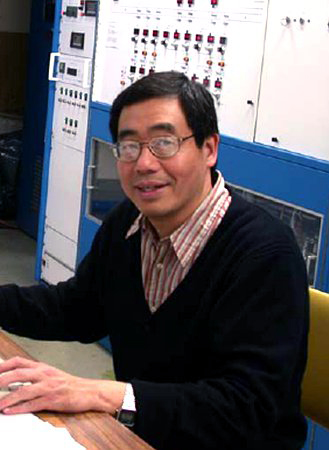CSEE professor Fow-Sen Choa has been selected as a Fellow of SPIE, the International Society for Optics and Photonics.
SPIE Fellows are honored for their technical achievements and for their service to the general optics community and to SPIE in particular. Professor Choa was cited for for achievements in the development of standoff chemical sensing using quantum cascade lasers. In the announcement of Dr. Choa’s section, the SPIE noted that
“Choa has contributed significantly to the advancement of standoff chemical sensing using quantum cascade lasers, achieving a greater than 41 feet standoff chemical detection distance. In addition his research on MOCVD growth and regrowth of quantum cascade lasers (QCLs) has led to the development of high power QCLs, integrated widely tunable QCLs, and power scalable surface-emitting QCL arrays. He has developed large format (64×64) photon counting arrays and demonstrated current-bias-mode photon counting techniques to simplify the bias circuits for 64×64 single photon arrays. Notably, his research has extended into broadband, low crosstalk, low noise semiconductor gain materials, Photon-neuron interactions, high speed long distance (loss-limited) multimode fiber transmissions, and other technologies associated with optical networks, lasers, and integrated coherent receivers.
A prolific scientific author, Choa has published nearly 200 refereed conference papers and over 70 peerreviewed articles, has received nearly 50 grants, and has been issued 10 patents. He has also served the greater optical community by serving as an associate editor, topical editor, and reviewer for several journals and he has been recognized as for his expertise as research faculty for eight years.
Choa has made sustained contributions to the SPIE community by serving on program committees of the SPIE Defense, Security, and Sensing Conference. He has authored and co-authored more than 50 SPIE journal and conference publications including three invited papers.”
In his opto-electronics and MOCVD lab at UMBC, Dr. Choa uses a Chemical Vapor Deposition System to grow semiconductors, which include semiconductor lasers, semiconductor detectors, semiconductor optical amplifiers, modulators, and optical switches. A member of MIRTHE (Mid-Infrared Technologies for Health and the Environment), whose mission is to conduct research with postdocs and graduate students, while engaging undergraduate students, high school teachers and students in science and engineering projects as a way to encourage them to pursue careers in the field, Dr. Choa is responsible for providing MIRTHE with mid-IR materials, lasers, detectors and subsystems.
The semiconductors grown in his lab can also be applied for chemical detection and breath analysis using photo-acoustic (PA) effects. “When the wavelength of the photon matches with molecules’ vibrational transition, light can generate acoustic signals through thermal expansion,” he explains. “Using the PA effect, people have demonstrated parts per billion chemical detection sensitivities. Using the chemical sensing capability we can monitor contamination in our environment and the chemical content of our breath as precursors of our health conditions.”
